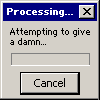
This is a part of a series of sketches I did for a color project I'd like to do some day involving a couple of the Move to the Music! girls. Since the guitar will be much larger than them, and since I am not a musician myself I decided I should do some research into what makes up an electric guitar. I have been able to fudge it with a couple of my earlier pieces http://www.furaffinity.net/view/1256728/ http://www.furaffinity.net/view/1822274/ but it would be a much more unusual angle and far more prominent in the picture. Therefore I felt needed to settle on model and the research it.
The Fender Stratocaster is one of the iconic images of Rock n' Roll. Leo Fender's has been a part of the music world since the 1950's. It has helped create many of the great moments in Rock n' Roll. While the Stratocaster does have a certain timeless quality to it the design has not remain static. Over the decades numerous changes, some subtle some not, have occurred to the iconic Strat. Since the pieces will involve close ups of the guitar I settled on the American Series of Stratocaster.
The Fender Stratocaster is one of the iconic images of Rock n' Roll. Leo Fender's has been a part of the music world since the 1950's. It has helped create many of the great moments in Rock n' Roll. While the Stratocaster does have a certain timeless quality to it the design has not remain static. Over the decades numerous changes, some subtle some not, have occurred to the iconic Strat. Since the pieces will involve close ups of the guitar I settled on the American Series of Stratocaster.
Category All / Still Life
Species Unspecified / Any
Size 1235 x 937px
File Size 116.5 kB
Yeah I was amazed at how many different models there are! What's worse is at a quick glance they look very much alike, but upon closer examination they all have their own unique shape and design. It gets even more fun when you have to figure out what model, year of manufacture, country it was made in, and who owned Fender at the time. I settled on the American Series because I could find the most consistent reference images for it.
Yeah the designs changed over the years. The first models had a single-ply scratchplate but then a thicker, three-ply plate was introduced around 1960(ish). The style of lettering on the headstock also changed over the years.
As much as I admire the Strat, I also covet the "lesser" Telecaster. Billed as a "budget" guitar and simply construted, it went on to achieve iconic greatness!
Wardy
As much as I admire the Strat, I also covet the "lesser" Telecaster. Billed as a "budget" guitar and simply construted, it went on to achieve iconic greatness!
Wardy
Oh yes! The Gibson SG is a sweet guitar, as is the Gibson Les Paul. The latter was made of mahogany for a long sustain but as a result was one heavy mutha-fooker!
Oh but the Les Paul sounded good, here's a sample of what Gary Moore can do with one.
http://www.youtube.com/watch?v=i6IO5EN49hY
Wardy
Oh but the Les Paul sounded good, here's a sample of what Gary Moore can do with one.
http://www.youtube.com/watch?v=i6IO5EN49hY
Wardy
Hmmm. Ok here is a general rule of thumb for drawing in general I follow. For the most part an object will tell you how to draw it. Now before you roll your eyes and think "Gee that's no help!" this is what I'm getting at.
Individual objects are made up from a series shapes that give the object its unique shape and silhouette. Ok now here is the trick to using this to your favor. You can also those distinctive shapes as guides for checking whether your drawing is staying on model with the actual object. On the Stratocaster its overall length is roughly that of two lengths of its main body, and the main body was roughly three guitar necks in width. Now these are general guidelines that had to firm up later but it helped establish the basic shape on the paper.
Once the very basic shapes establish I'll look at the next level of detail. The bridge on the guitar is a bit wider that one neck. Same goes for the pickups although you'll notice I did not get to line perfect in this sketch. If this was a final finished piece I'd correct before going on to the final color. As it is I wrote myself a reminder note on it instead.
Also this can be used to verify perspective. I had to make certain that the string posts on the headstock would line up with where the strings attached to the bridge. That is where I made the mistake with the pickups. I got more or less in the right spot but they don't match up quite right with the actual strings.
I'll keep making these mental scans of object getting progressively tighter and tighter until I the object rendered lightly on the paper then I'll do one check before I start cleaning up the drawing. Its not perfect and unfortunately it is not a trick you can master overnight. The hangup it has is that can be easy to want jump to the little niggly details before you have made certain you really have gross shape of the object properly locked down visually. I hope this is of some help for you and remember I have been doing this for more than forty years so I do have a bit of practice at it. You don't get to Carnegie Hall overnight. Good luck and feel free to contact me if you have more questions.
Individual objects are made up from a series shapes that give the object its unique shape and silhouette. Ok now here is the trick to using this to your favor. You can also those distinctive shapes as guides for checking whether your drawing is staying on model with the actual object. On the Stratocaster its overall length is roughly that of two lengths of its main body, and the main body was roughly three guitar necks in width. Now these are general guidelines that had to firm up later but it helped establish the basic shape on the paper.
Once the very basic shapes establish I'll look at the next level of detail. The bridge on the guitar is a bit wider that one neck. Same goes for the pickups although you'll notice I did not get to line perfect in this sketch. If this was a final finished piece I'd correct before going on to the final color. As it is I wrote myself a reminder note on it instead.
Also this can be used to verify perspective. I had to make certain that the string posts on the headstock would line up with where the strings attached to the bridge. That is where I made the mistake with the pickups. I got more or less in the right spot but they don't match up quite right with the actual strings.
I'll keep making these mental scans of object getting progressively tighter and tighter until I the object rendered lightly on the paper then I'll do one check before I start cleaning up the drawing. Its not perfect and unfortunately it is not a trick you can master overnight. The hangup it has is that can be easy to want jump to the little niggly details before you have made certain you really have gross shape of the object properly locked down visually. I hope this is of some help for you and remember I have been doing this for more than forty years so I do have a bit of practice at it. You don't get to Carnegie Hall overnight. Good luck and feel free to contact me if you have more questions.
The most important thing is to use it often. You can even practice it when your not drawing. A drill I learned was when I ever came across an object and I had the time to do it I'd just stare at and do that little drill in my head of deconstructing it as I was looking at it. With time it got easier and easier to do.
My brother had a real Fender Strat once, back when Mr. Fender was still alive. Then he traded it for something else that had 3 toggle switches on it, just because he wanted to know what it was like to play an electric guitar that had 3 toggle switches. Then Mr. Fender died and Fender Strats got crazy expensive.
It's one of his Big Regrets™. You know, like turning down that investment request for some stupid company called Google. Or throwing out that box of baseball cards you had as a kid.
It's one of his Big Regrets™. You know, like turning down that investment request for some stupid company called Google. Or throwing out that box of baseball cards you had as a kid.
Nope. In fact I think my architecture sucks! But I still keep getting asked to do it because people like my buildings.....go figure. No my love is vehicles, equipment, and personal objects. For that I have been asked to do concept design for pre-production related to video games, movies, and television shows. Unfortunately it has been all pre-production and in usual Hollywood fashion 80% of everything that gets started in Hollywood never gets finished or sees the light of day. If doesn't get finished you don't your name in the credits. Sigh, such is life. Also I've done a little set design for theater in college, and use to compete in flying model competitions where I was designing and constructing my own models.
These look fantastic. I'm actually designing and building a guitar right now, so I can sympathize with the staggering amount of detail that goes into the design.
Funny little tidbit about the tremolo bar, it doesn't actually produce a tremolo effect. Tremolo is the effect of increasing and decreasing the volume, usually at a steady rate. You can often hear this effect on recordings of electric pianos or organs run through a rotating speaker. What the whammy bar on a guitar does is produce vibrato, which alters the pitch of the note rather than it's volume. I guess Leo Fender made a mistake naming the part and the name just stuck
Funny little tidbit about the tremolo bar, it doesn't actually produce a tremolo effect. Tremolo is the effect of increasing and decreasing the volume, usually at a steady rate. You can often hear this effect on recordings of electric pianos or organs run through a rotating speaker. What the whammy bar on a guitar does is produce vibrato, which alters the pitch of the note rather than it's volume. I guess Leo Fender made a mistake naming the part and the name just stuck
Very nice.Solid body guitars are hard to draw B&W cause most of the curves come out in the reflections in the paint and shade. I have noticed once you hold one for a while and mess with it or with anything a person can draw them alot better o.o Harder to do with like planes and tanks but models help alot.
You've got a slightly odd mix of parts if you're going for factory original. A plastic-tipped whammy bar on a 2-point tremolo would usually be seen on an American Standard strat paired with a set of stamped saddles rather than the solid saddles you've drawn. A 2-point with solid saddles would more frequently be seen with an all-metal snap-in whammy on an American Deluxe, which would also sport a set of locking tuners up on the headstock (visually differentiated by the large thumbscrew on the back of each tuner).
I happen to have an American Deluxe, so if you need any details pics feel free to ask.
I happen to have an American Deluxe, so if you need any details pics feel free to ask.

 FA+
FA+
















Comments